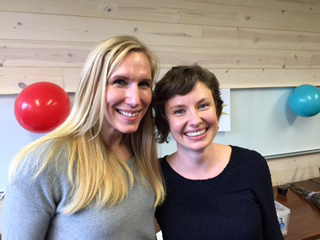Overview
Contact
- Staff Directory
- Medicine Student Programs website (requires UW Net ID)
 Opportunities for learning are available at all levels of training.
Opportunities for learning are available at all levels of training.
In their first and second years before clinical clerkships begin, medical students participate in the Primary Care Practicum, working with community physicians every other week.
In their third year, all medical students take the required 12-week medicine clerkship. In addition, there are more than 55 electives in a wide range of subspecialties for third and fourth year students.
First and second years: Foundations Phase
The scientific foundation classes are designed along systems of health, and take a “flipped” classroom approach to learning. Woven into the curriculum are “threads” such as human form and function, pharmacology and pathology, as well as “themes” such as ethics, diversity, health equity and social determinants of health.
Primary Care Practicum (PCP)
All students will have a required longitudinal exposure to primary care for a full day every other week for the entire Foundations Phase. Internal medicine (IM) physicians throughout the WWAMI region are participating in this training. Many PCP educators are former UW IM residents and students.
In addition to the required basic science core curriculum, the Department of Medicine offers 15 lecture-based electives, known as nonclinical electives.
Third and fourth years: Clinical
In the third and fourth years, medical students are required to take 10 clerkships, as well as electives.
Third-year required clerkships:
- Internal medicine (12 weeks)
- Family medicine (6 weeks)
- Obstetrics/Gynecology (6 weeks)
- Pediatrics (6 weeks)
- Psychiatry (6 weeks)
- Surgery (6 weeks)
Fourth-year required clerkships:
- Emergency medicine (4 weeks)
- Rehabilitation medicine/chronic care (4 weeks)
- Neurology (4 weeks)
- Surgical elective (4 weeks)
Internal medicine clerkship
The 12-week required third-year internal medicine clerkship is consistently ranked #1 or #2, based on the highest end of clerkship score for all of the required clerkships.
“I was surprised to see how much students were valued, how much our role was emphasized, and how much attention and time was given to our education.”
-Third year medical student
Sites
Sixty-five percent of third-year students in our internal medicine clerkship rotate in both Seattle (inpatient) and WWAMI (outpatient)
- WWAMI: 35 sites in 5 states
- WWAMI Rural Integrated Training Experience (WRITE): 34 sites with IM in 5 states
- Greater Puget Sound: 7 hospitals plus 5 outpatient clinics
Visiting students
 We host 2-3 students, residents, and faculty from Shimane University, Japan.
We host 2-3 students, residents, and faculty from Shimane University, Japan.
Approximately 50 visiting students, US and international, rotate in electives and subinternships per year. UW students do a 6-week clerkship in Kenya, Uganda, Nicaragua, Peru, Nepal, and Vietnam.
Visiting scholars program
We also have a Visiting Scholars Program (VSP) designed to give students with diverse backgrounds a chance to experience the training that the University of Washington Department of Medicine has to offer.
Teaching and student awards
- Department of Medicine Outstanding Student Award
- Richard M. Tucker Excellence in Teaching Awards for WWAMI faculty (six recipients annually)
- Robert S. Evans Student Award
- Violet Zuvela IM Primary Care Scholarship
- Alpha Omega Alpha Honor Medical Society (we nominate 45-60 students per year)
- ACP Douglas S. Paauw MD Outstanding Student in Internal Medicine Award




